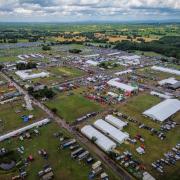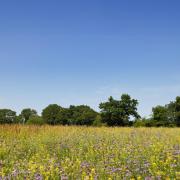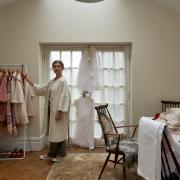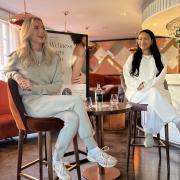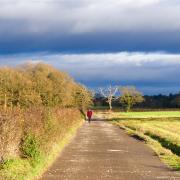James Balme visits the castle fought over by Royalists and Parliamentarians.
High above the Cheshire Plain close to Tarporley, on Beeston crag stands the imposing remains of Beeston Castle.
Built by Ranulf de Blondeville, the 6th Earl of Chester in the early 13th century the fortification sits within the remains of an earlier Iron Age hillfort. But the site itself dates back to much earlier times and evidence has been unearthed from both the Neolithic period, circa 4000 to 2400 BC, as well as evidence of activity from the early Bronze Age in the form of bronze axes and associated metalwork materials.
The evidence points to Beeston having been a major metalworking centre in Cheshire during the Bronze Age. The Romans were no strangers to Beeston eithter and pottery from their settlements has been found close to the base of the castle that stands to this day.
The castle has a long and interesting history, starting with its construction beginning in the year 1226. However, at the time of Ranulf’s death in 1232, the castle was unfinished and this was still the case in 1237 when his successor, John, also died. On the death of John, the castle passed to King Henry III and was then used as a place to assemble troops and supplies for the monarch's campaigns into Wales.
In 1254, Henry passed Beeston to his son Edward who would eventually become Edward I. Beeston remained a royal castle well into the early 16th century. The Crown then decided it had no further use for the site and the castle was acquired by Sir Hugh Beeston and occupied subsequently by members of his family.
In February 1643, Beeston was seized on the orders of Sir William Brereton, commander of the Parliamentarian forces of Cheshire and garrisoned. But the holding of the castle by the Parliamentarian troops was not to last and on the 13th of December, 1643, Royalist troops captured the fortress by scaling the steep cliffs on the north side.
Between November 1644 to November 1645 Brereton’s troops laid siege to Beeston in an attempt to retake the castle. On the 15th of November, 1645, the Royalist garrison laid down arms and surrendered. Following the end of the English Civil War orders were given for the castle defences to be permanently destroyed, removing the possibility of any future use.
By 1722, ownership of the castle and surrounding land had passed to Sir Thomas Mostyn and the land let for grazing as well as stone quarrying. The Beeston estate was bought once again in 1840 by Lord Tollemache and quarrying allowed to continue but it was not long before the beauty and historical value of the site was recognised and attempts made to repair and conserve the structure that remained.
Today Beeston Castle remains of great historical interest and is under the care and guardianship of English Heritage. Access to the castle, museum and woodland park includes Beeston Roundhouse, a replica Bronze Age structure built using authentic tools.
My film, The Beauty of Beeston Castle, can be viewed for free with many other local history films by visiting my channel, youtube.com/Tvpresenter4history.
Things to look out for
Excavated Bronze Age tools displayed in the castle museum
The castle well, one of the deepest in England at more than 300 feet
The Beeston Roundhouse, an authentic reconstruction in the woodland
READ MORE: Cheshire walk - Beeston and Peckforton






